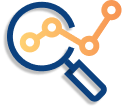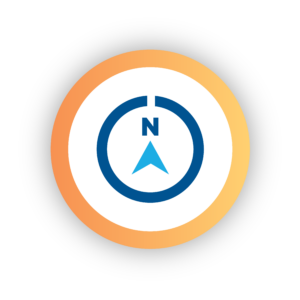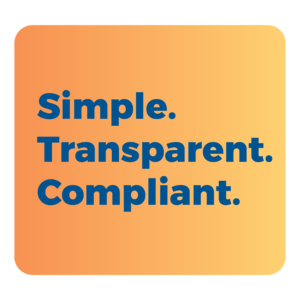Pressures today in healthcare finance, purchasing, and procurement represent a series of interlocking challenges that are having serious impacts on operations and the fiscal bottom line. Inflation and supply chain disruptions are being felt across the industry, and it’s essential for leaders to assess the landscape and take proactive measures.

The numbers are extremely stark: A report from the global consulting firm McKinsey & Company estimates that the healthcare industry as a whole is facing a rise in anticipated spending of $370 billion by 2027 due to inflation.
It comes as no surprise that a recent Deloitte survey of procurement officers revealed that two-thirds of companies questioned are placing a high priority on cost savings (that number is up by about 25% from a few years ago).
With challenge comes opportunity, and pursuing cost savings can lead to greater efficiencies and long-term resilience for healthcare organizations in the following ways:
- Contract Management and Supplier Relationships
With accurate data, purchasing officials can review existing contracts with suppliers with an eye to renegotiating better terms and pricing. Having flexibility and a range of supplier choices strengthens healthcare organizations’ bargaining position, including options such as group purchasing organizations (GPOs). - Accountable and Accurate Inventory
Inefficient reporting workflows and unaccountable inventory bleed money from healthcare organizations across the continuum of care. Automated software solutions in healthcare procurement are the strongest tool for minimizing waste, reducing storage expenses, and tracking usage patterns for supplies and services. - Forecasting and Proactive Procurement
Automated procure-to-pay solutions are the most powerful tools for empowering forecasting and bolstering supply chain resilience for purchasing professionals. With highly detailed and customizable reports and alerts, patterns in spend can be identified and cost efficiencies pursued with strategic intent. Factors such as shipping costs and delivery fees can be reduced with confidence supported by hard, verifiable data, and seasonal fluctuations can be handled with far greater ease. - Staff and Employee Efficiency
Because the healthcare industry has been slow to adopt automation in back-office business functions, cost savings through greater workforce efficiency have often been left behind. Inefficient, old-fashioned paper-based purchasing and procurement workflows and processes can lead to wasted hours for back-office staff and clinicians alike. Software automation means finance and procurement can eliminate wasted time, and caregivers and clinicians can concentrate on their core missions. - Data-Driven Strategy Reliable and accurate data drives cost savings like no other single factor. Identifying and quantifying purchasing centers with the highest cost begins the process of implementing cost-reduction strategies while focusing on supporting operations. The kind of detailed reporting capacity provided by P2P automation software lays the groundwork for mindful savings that don’t sacrifice quality and integrity.
- Automation Technology
Automation and technology are driving major cost savings on the clinical and provider side, utilizing machine learning and telehealth tech to meet core missions for less. Another major step is moving on from paper-based processes and legacy systems with a fully integrated back-office solution. - Regulatory Compliance
The ever-changing regulatory environment of healthcare means staying abreast of new requirements in Centers for Medicare & Medicaid Services (CMS) and the Drug Supply Chain Security Act (DSCSA). Accurate and timely data are the best tools for staying within regulatory compliance and avoiding financial penalties while also sidestepping countless staff hours spent in inefficient processes and workflows. - Sustainability Efforts
Internally driven initiatives around environmental and social governance goals can be effectively tackled with accurate data, reporting, and alerts that enable financial and purchasing professionals to meet requirements without negatively impacting financial performance.
Automated Procurement Solutions Drive New Savings

Leaders in healthcare finance and purchasing are utilizing the latest automated software solutions to find savings and efficiencies across their procure-to-pay processes. The accountability, transparency, and integration the best solutions provide can, in many cases, literally pay for itself.
Just a few of the benefits of software automation in healthcare procure-to-pay applied across a wide range of markets, include:
- A wide range of vendors and suppliers to choose from, and features such as Procurement Partners’ Punch-Out Catalogto enable quick and easy ordering outside of established suppliers.
- Easy-to-use and quick-to-learn, versatile ordering platforms.
- Centralized invoices to avoid inefficiencies such as duplicative billing.
- Detailed, customizable reports and alerts to drive proactive financial strategy and substantial savings.
- Total inventory accuracy and transparency to eliminate waste and promote cost efficiency.
- Automated Accounts Payable to drive down costly inefficiency and compile accurate information available at the touch of a button.
- Rich and robust data to drive healthcare enterprise strategy and bring the c-suite and the back office into total alignment.

Looking to Reduce Your Annual Spend?
Procurement Partners helps healthcare organizations strengthen their supply chain operations while reducing annual spend by over 10%. As a leading healthcare supply chain software solution purpose-built for post-acute, non-acute, and continuum-of-care providers, the platform simplifies the procure-to-pay process. Users can place orders and process invoices for all suppliers through a centralized system. By automating procurement workflows, organizations report up to 40% time savings and 95% supplier contract compliance.





